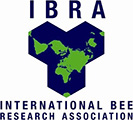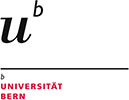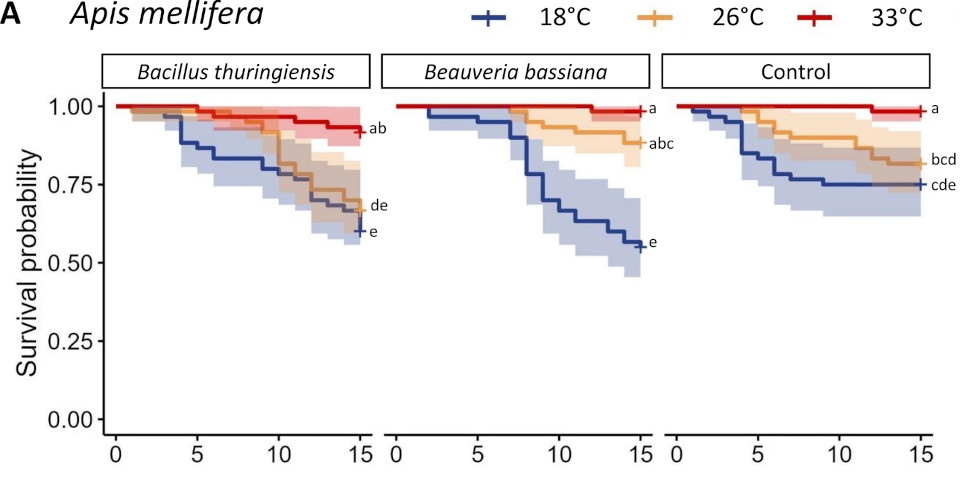Background: The evaluation of the impact of pesticides on non-target species, like bees, is a crucial factor in registration procedures. Therefore, standardized test procedures have been developed on OECD level assessing the effects of chemicals on honey bees or bumble bees. Unfortunately, these protocols cannot directly be adapted for testing products that contain microorganisms. Interest in the use of microorganisms has increased in recent years due to their specificity to target species while not harming non-target organisms. This study aimed to evaluate optimal conditions to assess the effects of microbial plant protection products on bee species according to currently available test protocols. Some of the most commonly used microorganisms for plant protection, Bacillus thuringiensis subspecies aizawai (B. t. a. ABTS 1857) and Beauveria bassiana (B. b. ATCC 74040) were tested on Apis mellifera, Bombus terrestris, and Osmia bicornis at different temperatures (18, 26, 33 °C) under laboratory conditions. Results: Exposure to the product containing B. t. a. ABTS 1857 resulted in higher mortality compared to B. b. ATCC 74040 in all tested bee species. A temperature-dependent effect towards higher mortality at higher temperatures of 26 °C or 33 °C was observed in O. bicornis exposed to both microorganisms. A. mellifera showed variable responses, but for B. terrestris there was mostly no effect of temperature when exposed to microorganisms in high concentrations. However, temperature affected longevity of bee species in the non-exposed control group. A. mellifera mortality increased with decreasing temperatures, while B. terrestris and O. bicornis mortality increased with increasing temperatures. A test duration of 15 or 20 days was found to be suitable for testing these microorganisms. Conclusion: In conclusion, 26 °C should be considered the worst-case scenario for testing B. bassiana on all tested bee species. For testing B. thuringiensis, a temperature of 33 °C is recommended for A. mellifera, whereas B. terrestris and O. bicornis should be tested at 26 °C.
Testing microbial pest control products in bees, a comparative study on different bee species and their interaction with two representative microorganisms
You are here:
Share this post

Author: SilvioErler
https://www.researchgate.net/profile/Silvio_Erler/publicationssince 2022 - Privatdozent (lecturer) at Technische Universität Braunschweig, Zoological Institute since 2020 - Deputy head of the institute, Institute for Bee Protection at JKI 2019-2020 - Senior research associate at Julius Kühn-Institute (JKI) – Federal Research Centre for Cultivated Plants, Institute for Bee Protection (Germany) 2018-2019 - Deputy chair of 'Animal Ecology' at MLU Halle-W. (Germany) 2013-2018 - Lecturer at MLU Halle-W. (Germany) 2012-2013 - PostDoc (University of Agricultural Sciences and Veterinary Medicine Cluj-Napoca) 2012 - Dr. rer. nat. (Martin-Luther-University Halle-W. Germany) 2008 - Diploma in Biology (Martin-Luther-University Halle-W. Germany)






